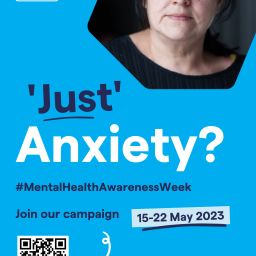 Self-harm, a behavioural pattern deeply rooted in emotional turmoil and distress, often goes unnoticed or misunderstood. Self-Injury Awareness Day occurs every year in early March, to shed light on the silent struggles that many individuals face behind closed doors. Almost 17% of the population will self-harm at some point in their lives. This is not uncommon, but it’s also not spoken about. Awareness days seek to bring the unspeakable into the public consciousness and conversation, to encourage us to delve deeper into our understandings of the complexities of self-injury and start to learn about the route to recovery so we can better support the people in our lives who might be affected.
Self-harm, a behavioural pattern deeply rooted in emotional turmoil and distress, often goes unnoticed or misunderstood. Self-Injury Awareness Day occurs every year in early March, to shed light on the silent struggles that many individuals face behind closed doors. Almost 17% of the population will self-harm at some point in their lives. This is not uncommon, but it’s also not spoken about. Awareness days seek to bring the unspeakable into the public consciousness and conversation, to encourage us to delve deeper into our understandings of the complexities of self-injury and start to learn about the route to recovery so we can better support the people in our lives who might be affected.
Self-harm isn’t merely a symptom; it’s a profound expression of inner pain, a cry for help masked by scars and silence. Philippe Pinel, a French psychiatrist in the 1800s, first documented the tendencies of psychiatric patients towards self-harm. Over time, self-harm became recognised as a symptom of mental illness, leading to institutionalisation and medication as primary forms of treatment. However, it wasn’t until the 1990s that self-injury gained significant attention, paving the way for conferences and societies dedicated to its study and understanding.
The statistics surrounding self-harm are staggering and sobering. 17% of people are known to self-harm at some point in their lives, with the average onset occurring as early as 13 years old. While the triggers may vary, stressors such as school, societal expectations, and internal conflicts often contribute to the spiral of despair. Signs of self-harm manifest in various forms, from physical wounds to behavioural patterns like substance misuse and self-isolation, each serving as a silent plea for relief from overwhelming emotions.
Self-harm, though distinct from suicidal intent, carries its own set of risks and complications, ranging from infections to severe injury and unintended death. The shame and guilt associated with self-injury exacerbate the internal struggle, leading to further isolation and emotional turmoil. It’s a vicious cycle, perpetuated by the stigma surrounding mental health and the misconceptions surrounding self-harm.
 At its core, self-harm is a manifestation of unresolved trauma, inner turmoil, and emotional distress. Hypnotherapy provides a safe space for individuals to confront and transcend these barriers, empowering them to embrace healing and transformation. By accessing the subconscious mind, therapists guide clients towards positive coping mechanisms and self-expression, breaking free from the shackles of self-harm.
At its core, self-harm is a manifestation of unresolved trauma, inner turmoil, and emotional distress. Hypnotherapy provides a safe space for individuals to confront and transcend these barriers, empowering them to embrace healing and transformation. By accessing the subconscious mind, therapists guide clients towards positive coping mechanisms and self-expression, breaking free from the shackles of self-harm.
The National Council for Hypnotherapy (NCH) boasts over 2,500 qualified therapists dedicated to addressing the underlying causes of depression, anxiety, and self-harm. Unlike traditional approaches, hypnotherapy delves deep into the unconscious mind, unraveling the intricate web of emotions and experiences that fuel self-destructive behaviours.
The journey towards healing begins with acknowledging the pain and reaching out for support. The stigma surrounding self-harm perpetuates silence and shame, isolating individuals in their struggles. However, by fostering open dialogue and compassion, we can create a culture of understanding and acceptance, where healing thrives and hope prevails.
If you or someone you know is struggling with self-harm, know that help is available. Hypnotherapy can offer a transformative path towards self-discovery and healing, guiding individuals towards a brighter tomorrow free from the shadows of self-harm. Find compassionate, effective help using the NCH’s Therapist Finder.
Photo by ammar sabaa on Unsplash
Photo by Toa Heftiba on Unsplash













